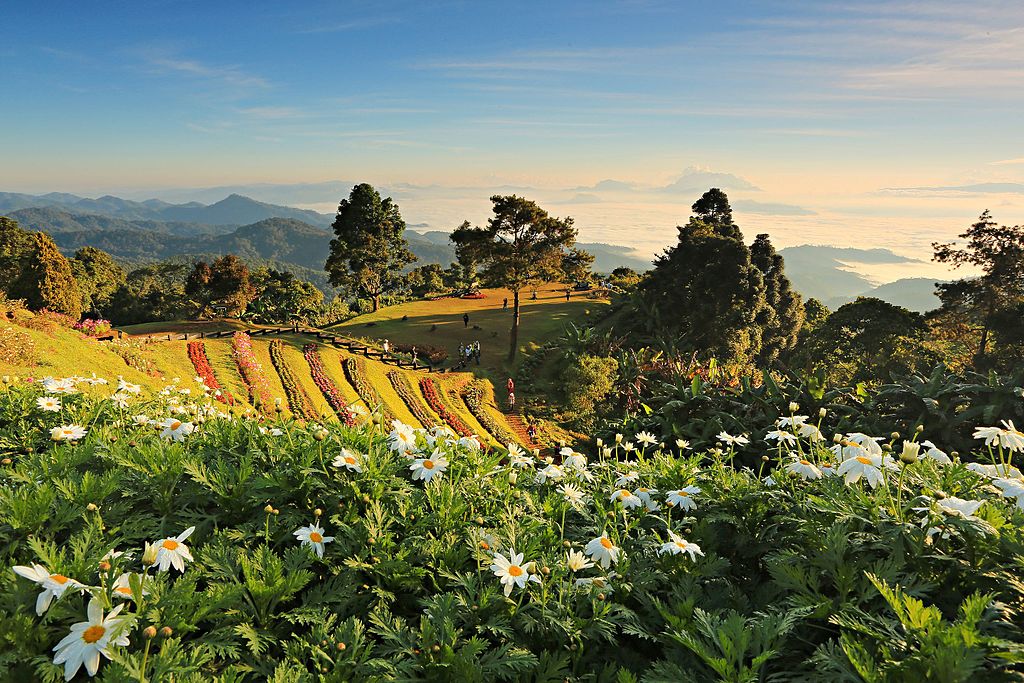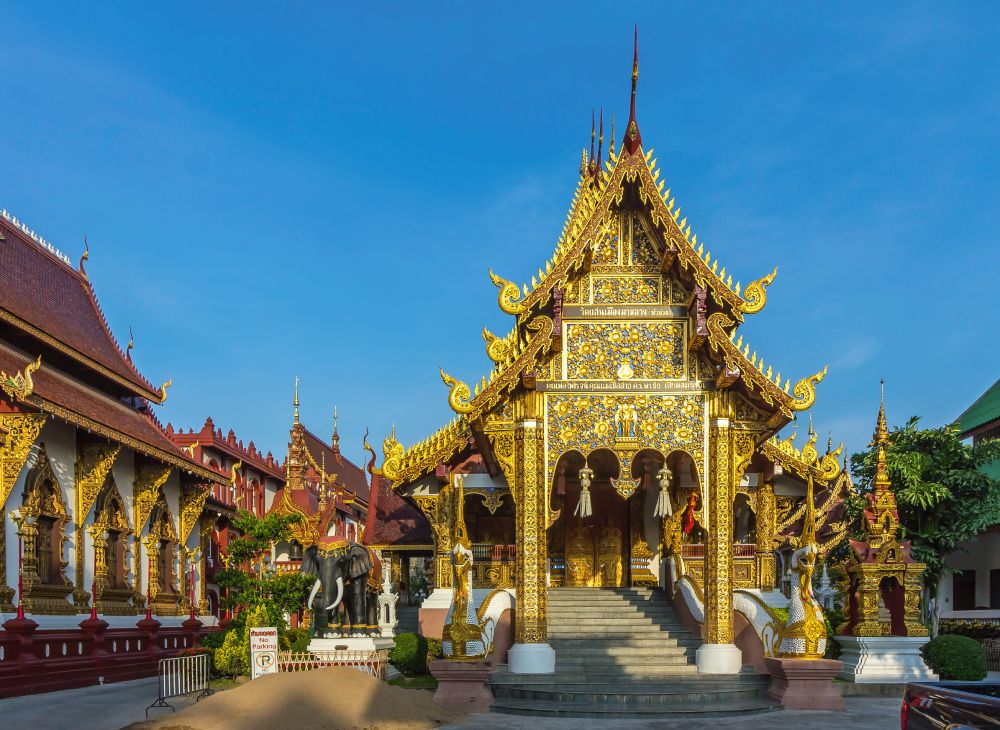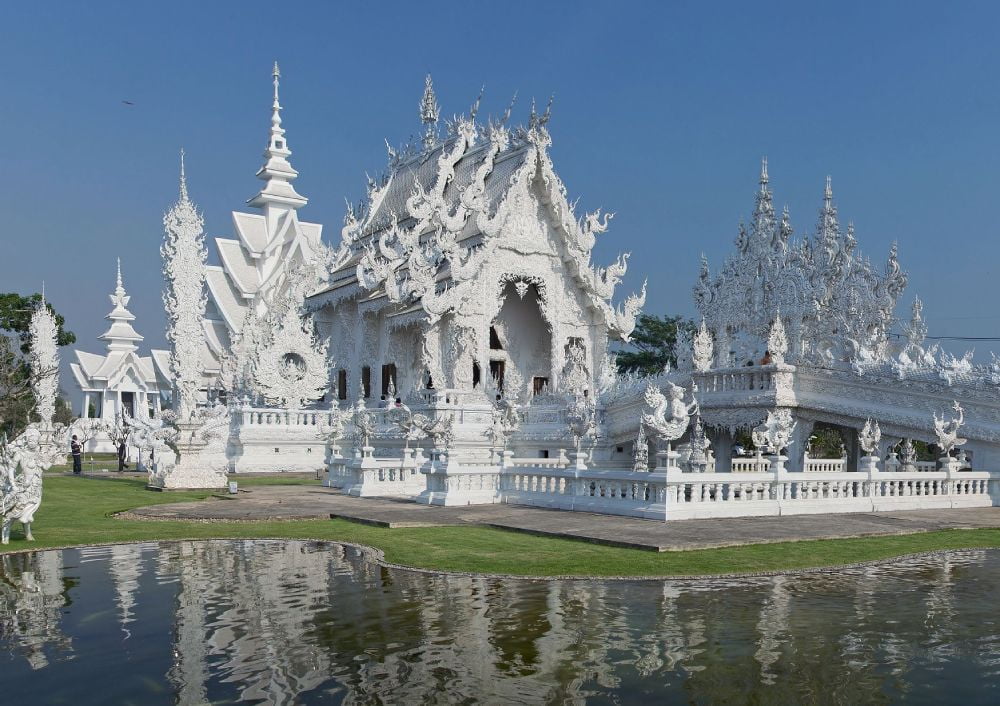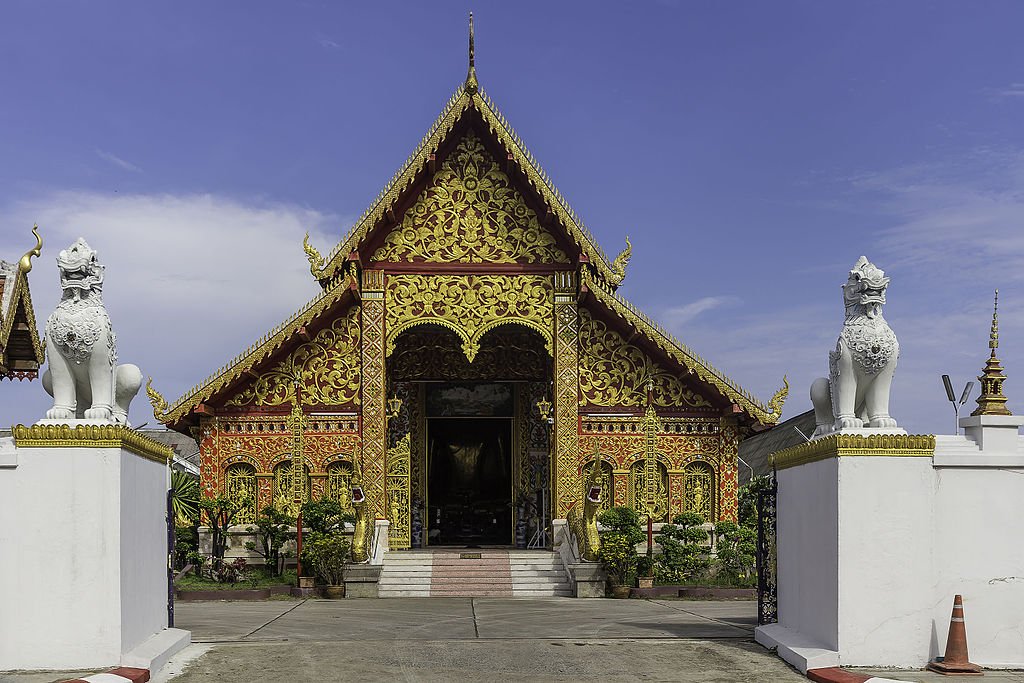Planning a solo trip to northern Thailand may seem difficult at first glance. Still, with the proper planning and preparation, it can be an unforgettable experience. I visited Chiang Mai and Chiang Rai on my own from Bangkok. I enjoyed all the cultural, gastronomic, and relaxation activities offered by these destinations during a short time as a digital nomad.
Table of Contents
What to see in northern Thailand: a region rich in history, culture and nature
Northern Thailand is a region rich in history, culture, and nature. The area is famous for its beautiful mountains, terraced rice fields, and the many indigenous ethnic groups that still maintain their ancient traditions and lifestyles. Notable cities include Chiang Mai, a hub of digital nomads, Chiang Rai, famous for the White Temple, and Mae Hong Son, which offers visitors the chance to immerse themselves in Shan and Karen culture.
PLAN YOUR TRIP TO THAILAND
Before your trip to Thailand, buy Airalo eSIM online to stay always connected at the best rates. You can install it before your trip, and you don’t have to hassle about purchasing a physical SIM at the airport.
In addition, remember to purchase Heymondo travel insurance that provides coverage against unexpected events such as medical emergencies, trip cancellations, lost luggage, and more. It offers great value for money and ensures a stress-free and enjoyable trip!
The northern region of Thailand also offers excellent opportunities for trekking, rafting and outdoor adventure. The area has several nature reserves and national parks, including Doi Inthanon National Park and Khun Chae National Park. You can also admire a wide range of fauna and flora here. Northern Thailand is a fascinating and wonderful region that offers an authentic and complete experience of the country’s culture and nature, albeit very touristy.
When to go: tips on climate and the best season to visit Chiang Mai and Chiang Rai
Chiang Mai and Chiang Rai are two cities in Northern Thailand good to visit all year round, but some seasons are better than others. The dry season, which runs from November to February, is the best time to visit these cities, as the climate is mild and dry, with average temperatures of 20-25 degrees.
Several festivals occur during winter, such as the Flower Festival in Chiang Mai and the Water Festival in Chiang Rai. The hot season, which runs from March to May, is the hottest season of the year, with temperatures that can reach 40 degrees. The rainy season, from June to October, can be unpredictable, but the landscape becomes lush and green after the rains.
I have been to Thailand several times at different times of the year. While the season can give you a rough indication of the weather, you cannot be absolutely sure. For example, during the rainy season in July, there were downpours during the day, but the weather cleared up so quickly that it was no problem to deal with the rain.
Even though, in principle, the best season to visit Chiang Mai and Chiang Rai in northern Thailand is during the dry season, don’t worry if you can go at other times. Thailand is always enjoyable at any time of the year.

How to get to northern Thailand from Bangkok: plane, bus or train
There are several options for getting to Northern Thailand from Bangkok, including plane, bus or train. Chiang Mai Airport is the main hub in northern Thailand. It offers direct connections to Bangkok and other major cities in the country. The journey by plane takes about 1.5 hours and can be the fastest and most efficient way to reach northern Thailand. However, the ticket price can be higher than other transport options.
The bus is the cheapest alternative to reach northern Thailand. Several bus companies offer daily services between Bangkok and major cities in the north, such as Chiang Mai and Chiang Rai. The bus journey takes about 9-12 hours and can be a good choice for travellers on a tight budget.
Finally, the train is another popular transport option to reach northern Thailand. While I have travelled to Thailand by plane or bus on other occasions, when travelling alone, I chose to reach the north of the country by night train. There are, in fact, convenient direct overnight trains that leave in the evening from Hua Lamphong train station in Bangkok and arrive in Chiang Mai in the morning of the next day.
Travelling by night train to the north is one of the best experiences in Thailand. Plus, you also save on accommodation for the night. Read my experience on the overnight train from Bangkok to Chiang Mai for more details on how to make this trip yourself.
Chiang Mai: Thailand’s digital nomad capital
Chiang Mai, the main city of Northern Thailand, has become a popular destination for digital nomads in recent years. Thanks to its quality of life, low living costs, and expat community, Chiang Mai has become one of the top destinations in Asia for those looking for a place to work remotely and live as a digital nomad.
During my solo trip to Thailand, I worked remotely. However, I preferred to focus on tourist activities over meeting other Westerners working remotely. In Chiang Mai, the food is excellent and cheap, and there are so many things to see that I spent most of my time visiting temples like Wat Chedi Luang or discovering local specialities in the markets.
What to do in Chiang Mai: massages, architecture and markets
Chiang Mai is also famous for its ancient and sacred temples, such as Doi Suthep, Wat Phra Singh, and Wat Chedi Luang. The city offers many opportunities to discover the local culture, including the Chiang Mai Night Market or the Traditional Lanna House.
In particular, the Saturday night market and the night market are the best places to buy souvenirs at low prices, sometimes even cheaper than in Bangkok. T-shirts with Thailand written on them and trousers with elephants are identical to those sold in any other tourist spot. Still, at least in northern Thailand, you can avoid haggling to pay the right price. If you decide to buy cotton fabrics or clothes, remember that they will shrink a lot in the first wash.
The Lanna Traditional House Museum is a colonial-style house with an elegant white balcony. This architectural style is popular in Malacca and Singapore but relatively rare in Thailand. The house that houses the Lanna Culture Museum was built in 1932 by a representative of the Bombay Burma Company, a company that traded teak in the region.

Where to get a massage in Chiang Mai
One of the best activities in Chiang Mai is to treat yourself to a massage. In northern Thailand, massages are super cheap, with prices starting at 200 baht, around €5, and are gentler than the traditional style of massage in Bangkok. During my stay, I chose two massage centres linked to a project for the social reintegration of female inmates:
- Women’s Massage Center employs female inmate masseuses who are in prison for non-serious crimes. The reintegration programme involves teaching traditional massage techniques to train them in a profession that can guarantee them a job once they leave prison.
- Lila Thai Massage was founded by former Chiang Mai Women’s Prison Warden Naowarat Thanasrisutharat to provide job opportunities for ex-inmates. Despite the excellent training these women receive in massage techniques, they still receive a lot of discrimination from employers who refuse to hire these specialised therapists.
Where to stay in Chiang Mai
In Chiang Mai, I stayed at a guesthouse run by a lovely European-Thai couple in a traditional wooden house. Unfortunately, it is now closed. However, if you are looking for an alternative, I highly recommend Le Canal Boutique House. The rooms are spacious, clean and beautifully decorated. The house is in the central part of the old city, and you can find many good restaurants nearby.
Another excellent accommodation is the Thai Akara – Lanna Boutique Hotel in Chiang Mai Old Town. It offers comfortable rooms, an outdoor pool and an in-house restaurant specialising in Thai cuisine.
Chiang Rai: the city of the White Temple
Chiang Rai is in northern Thailand, a few hours by bus from Chiang Mai. Although less well known than its neighbour, apart from the White Temple, Chiang Rai has much to offer visitors regarding culture, history and nature.
The city is most famous for Wat Rong Khun, better known as the White Temple, a magnificent Buddhist temple built in a modern style and decorated with white ornaments and crystals. You can visit the White Temple on a day trip from Chiang Mai.
If you want to spend more time in Chiang Rai, there are many other cultural and historical attractions, including the Oub Kham Museum, the Hill Tribe Museum, Wat Phra Kaew Temple and the King Mengrai Monument.
Above all, however, Chiang Rai is surrounded by spectacular, lush nature that lends itself perfectly to excursions. You can also set off from Chiang Rai for the Golden Triangle, an area now popular with tourists because it was once an opium production and trade area.

What to do in Chiang Rai, besides visiting the famous White Temple
The world-famous White Temple, whose Thai name is Wat Rong Khun, is located outside the city and can be reached either by renting a car or scooter or with a tour. You can book online a White Temple and Golden Triangle day tour or choosing one by local travel agencies, along with other tourist activities such as encounters with tigers, snakes or elephants. There is also a local bus to the White Temple but directions and timetables are incomprehensible to tourists.
An exciting activity is the Chiang Rai night market, which is full of clothing and handicrafts similar to the one in Chiang Mai. In the centre of the market area is a stage on which different dancers and singers perform every night. I recommend arriving early and sitting in the restaurant to see the live show.
The clock tower is a miniature tower with a clock that starts a music and light show every night at 7 pm, 8 pm and 9 pm. For locals, it is a must-see, if decidedly kitschy, attraction. The lights alternate colours from glow-in-the-dark green to neon pink, and you can admire the show while sitting in one of the little restaurants in the corners of the square, eating pad thai.
If you want to get a massage, I recommend the Akha Ya Massage Centre. It has excellent and friendly masseurs, and the prices are as cheap as in Chiang Mai.
Where to sleep in Chiang Rai
In Chiang Rai, I chose to stay in a traditional guesthouse in the city centre. Still, compared to Chiang Mai, clubs and shops close very early. In the evening, all the activity moves to the night market and the clock tower. Remember this when booking.
Baan Rub Aroon, where I slept on my solo trip to northern Thailand, is a beautifully restored colonial house decorated with works by local artists. The current owner initially bought it to turn it into a nursing home. Once she ran out of funds and partners for her project, the owner converted the property into a tourist guesthouse.
Framed in front of the kitchen is a motivational interview in which she tells how it is possible to completely change one’s life and work in one’s forties. Large, simple rooms combined with a beautiful tropical garden make this guesthouse a little paradise where you can relax. A delicious breakfast of tea, fried egg and fresh fruit is included in the room price.

Practical tips for travelling safely alone in Thailand
If you are planning a solo trip to northern Thailand, do not worry. It is an excellent destination for solo travel. However, it is essential to take precautions to ensure your safety during your stay, which applies to northern Thailand as they do elsewhere.
Firstly, take the usual general precautions while travelling, such as avoiding displaying valuables in public, not walking alone at night in poorly frequented and poorly lit areas, and not accepting rides from strangers. For instance, never hitchhike alone, although Thailand is generally safe for solo travellers.
Additionally, it is crucial to understand and respect the local culture. When visiting religious places like temples, wear modest clothes and cover your shoulders and knees. You should take off your shoes and wear a shawl and long skirt when required.
Travelling alone in northern Thailand can be a fantastic experience. Chiang Mai and Chiang Rai are among the main cities where you can begin your exploration. Feel free to share your experiences in the comments if you have already made this trip or if this article inspired you to go solo in Thailand.
